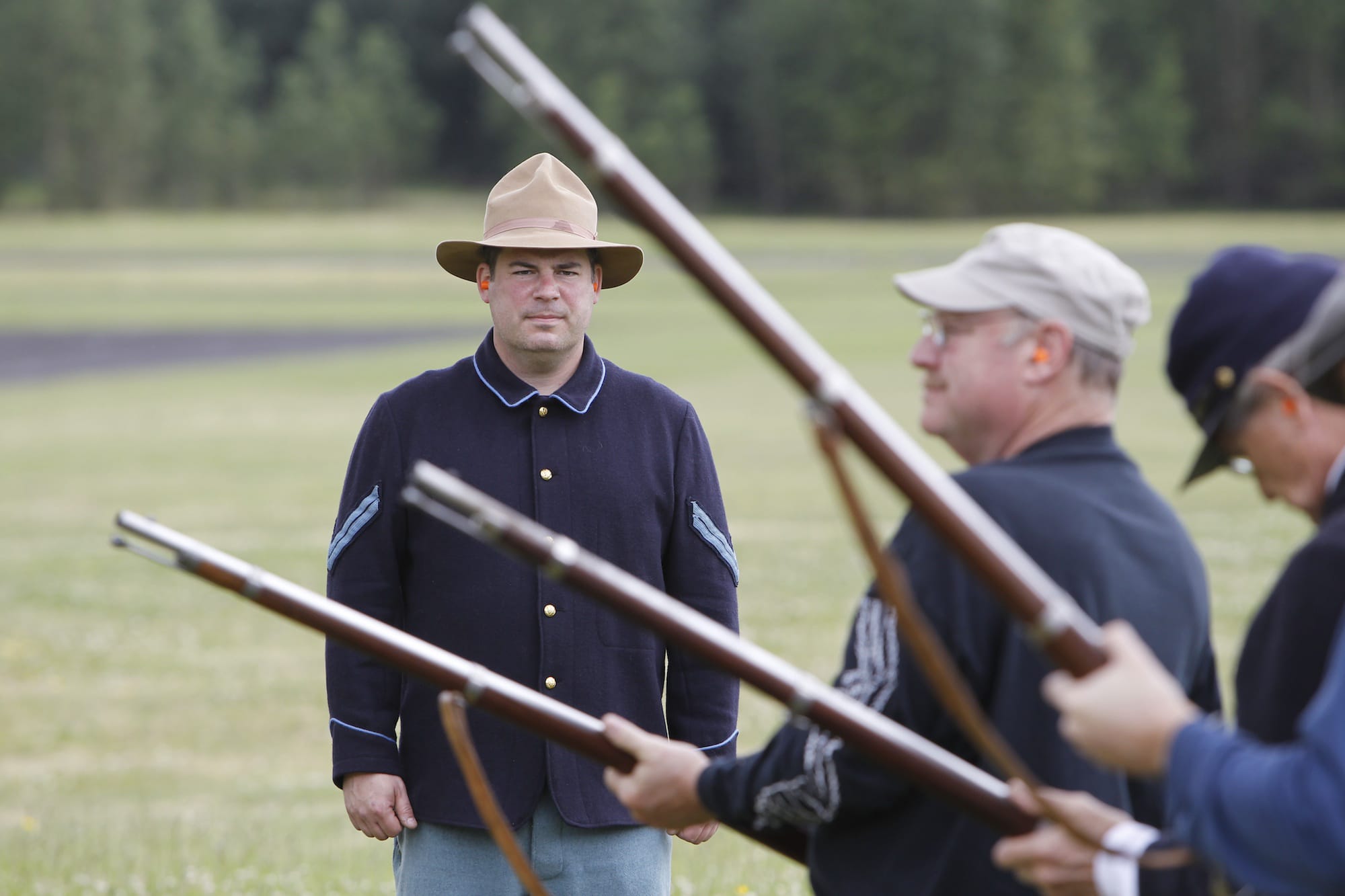Mike Twist’s job at Fort Vancouver puts him in a place that overlays almost two centuries of frontier heritage and American military history.
Still, it isn’t a place where people get to fire a Civil War-style cannon at an old Army tank. For that, Twist and Robert Gutierrez had to go to school.
Twist is a park guide and Gutierrez is a ranger at Fort Vancouver National Historic Site. They oversee the historic weapons program, working with re-enactors who demonstrate black-powder weapons.
As living-history participants, “We give voice to people who are no longer here,” Twist said. “We can do it through technology. We are a technological society, and technology is an easily accessed avenue.”
Instructors must undergo their own training, so Twist, Gutierrez and about 80 other park staffers from around the country — all dressed in period costumes — spent two weeks at Fort McClellan in Alabama this year.
It’s an Army National Guard Training Center, so things that go boom aren’t unusual. But the National Park Service weaponry was a bit dated: small arms and artillery of the 18th and 19th centuries. (Fort Vancouver’s arsenal includes a reproduction of an 1840s mountain howitzer.)
Training culminated with live cannon fire on an artillery range. Targets included old tanks and Jeeps.
“It was fun to fire cannons as they were meant to be used, and see what happens,” Twist said. In one technique, “You fire slightly below the target. It hits the ground, skips, kicks up dirt, and you hear the impact on the side of the tank.
“It’s a very loud metallic ‘Thunk!’ when a 12-pound projectile hits an immovable chunk of iron,” he said.
If they only fired blanks, Twist said, they would have had an incomplete understanding of artillery.
A 12-pound cannon ball “sounds different when it comes down the barrel,” Twist said. “The vibration of the barrel is different. The recoil is different.”
The most visual effect comes when a solid shot sails into the woods “and trees start falling down.”
They also fired rounds of smaller projectiles called grapeshot, which got Twist appreciating the resolve of Civil War soldiers who fought 150 years ago.
“It’s like a shotgun on a massive scale: a fan of projectiles 25 meters wide,” Twist said. “To think they got people to walk into that.”
Off Beat lets members of The Columbian news team step back from our newspaper beats to write the story behind the story, fill in the story or just tell a story.




